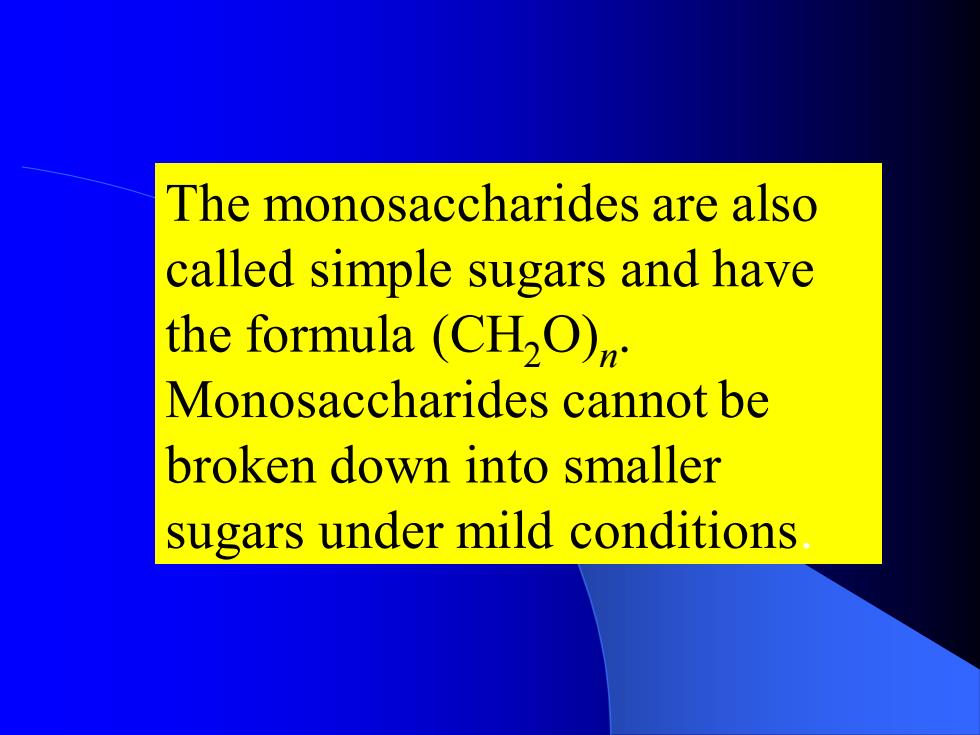
The monosaccharides are also called simple sugars and have the formula(CH2O) Monosaccharides cannot be broken down into smaller sugars under mild conditions
The monosaccharides are also called simple sugars and have the formula (CH2O)n . Monosaccharides cannot be broken down into smaller sugars under mild conditions
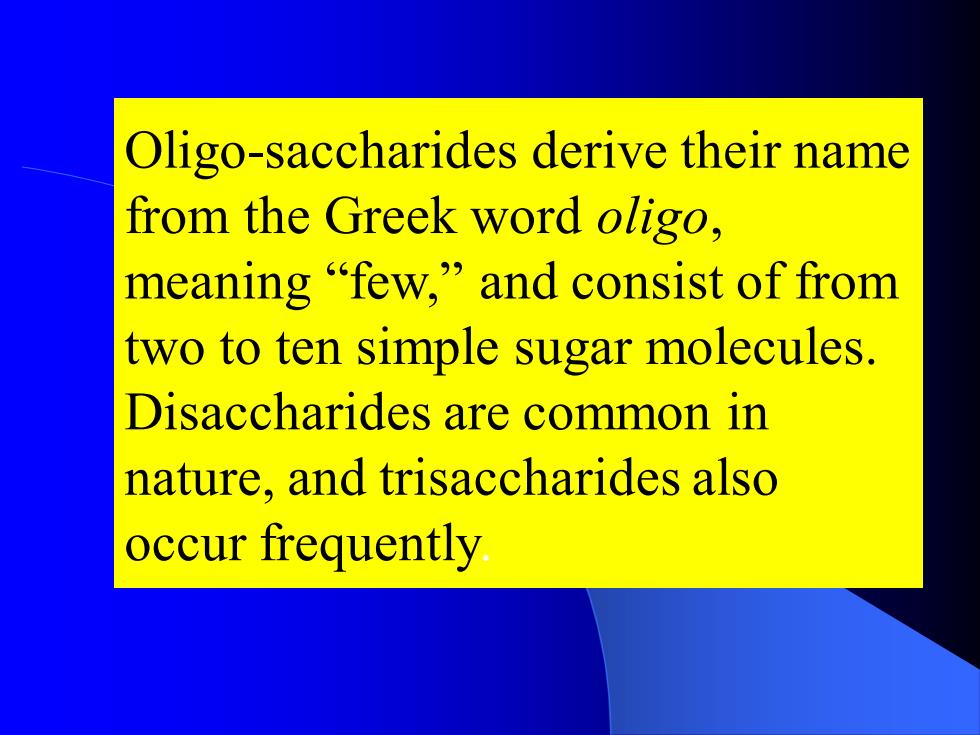
Oligo-saccharides derive their name from the Greek word oligo, meaning“few,”and consist of from two to ten simple sugar molecules. Disaccharides are common in nature,and trisaccharides also occur frequently
Oligo-saccharides derive their name from the Greek word oligo, meaning “few,” and consist of from two to ten simple sugar molecules. Disaccharides are common in nature, and trisaccharides also occur frequently
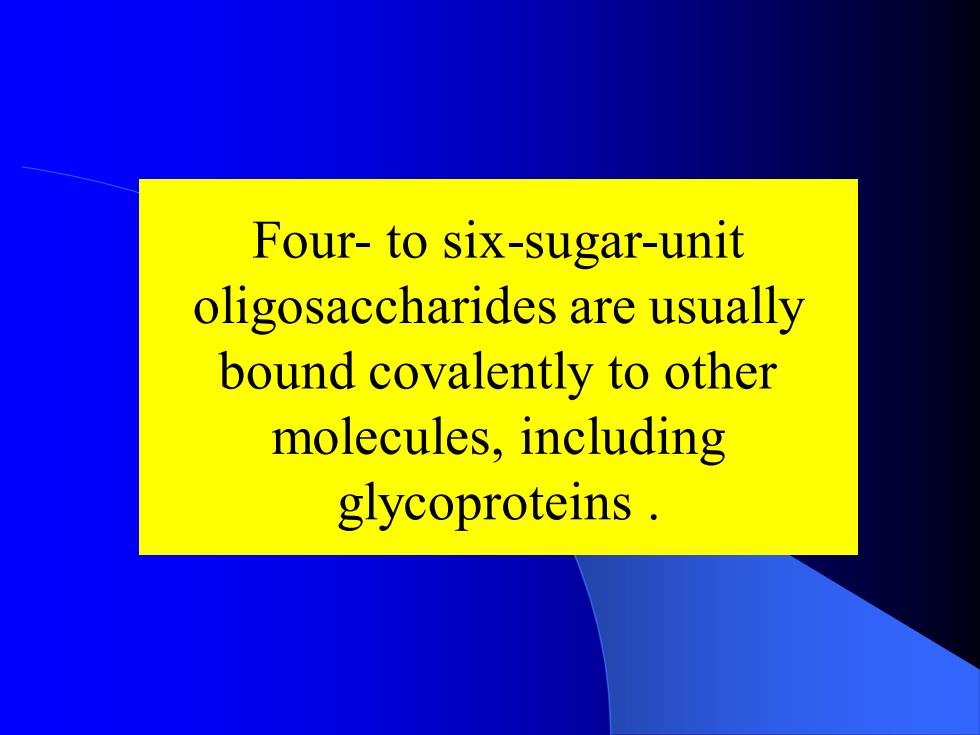
Four-to six-sugar-unit oligosaccharides are usually bound covalently to other molecules,including glycoproteins
Four- to six-sugar-unit oligosaccharides are usually bound covalently to other molecules, including glycoproteins
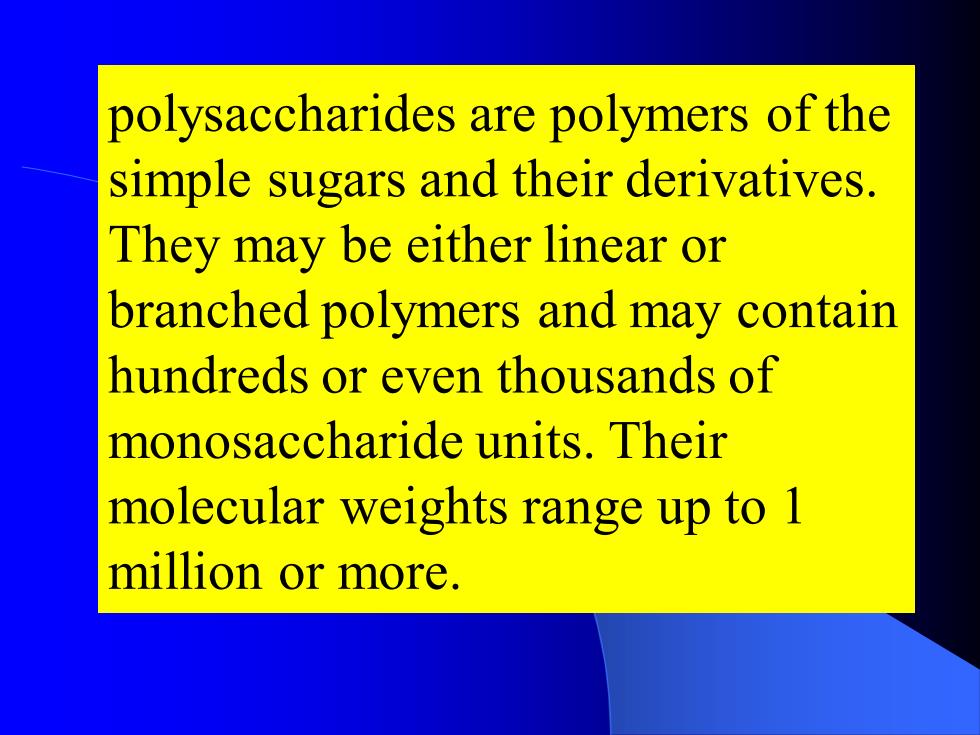
polysaccharides are polymers of the simple sugars and their derivatives. They may be either linear or branched polymers and may contain hundreds or even thousands of monosaccharide units.Their molecular weights range up to 1 million or more
polysaccharides are polymers of the simple sugars and their derivatives. They may be either linear or branched polymers and may contain hundreds or even thousands of monosaccharide units. Their molecular weights range up to 1 million or more
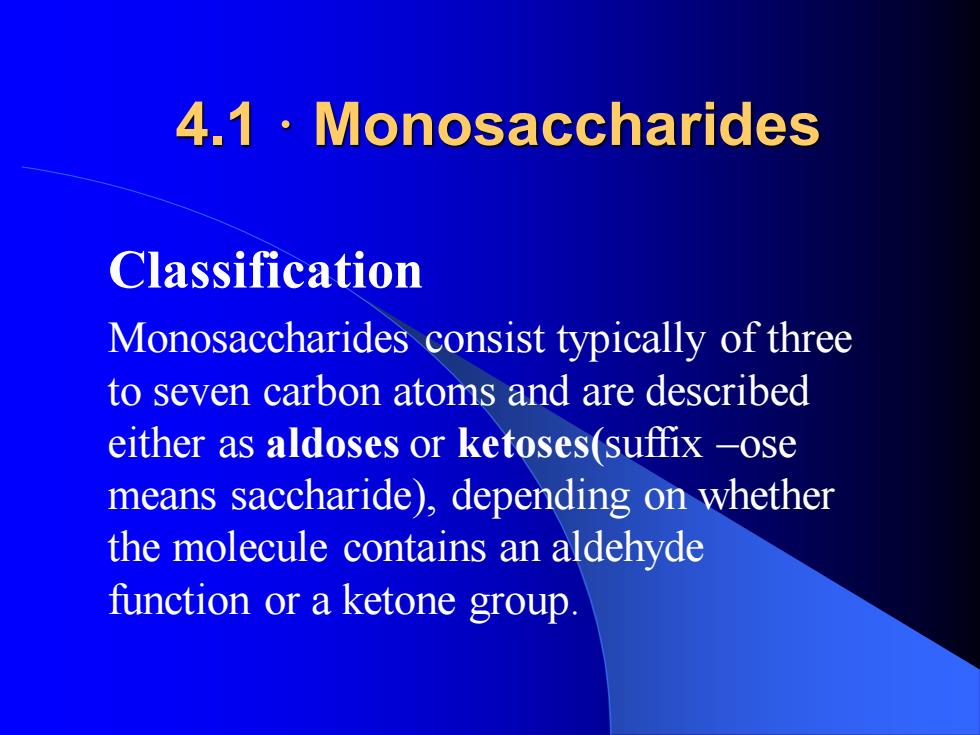
4.1 Monosaccharides Classification Monosaccharides consist typically of three to seven carbon atoms and are described either as aldoses or ketoses(suffix -ose means saccharide),depending on whether the molecule contains an aldehyde function or a ketone group
4.1 ·Monosaccharides Classification Monosaccharides consist typically of three to seven carbon atoms and are described either as aldoses or ketoses(suffix –ose means saccharide), depending on whether the molecule contains an aldehyde function or a ketone group